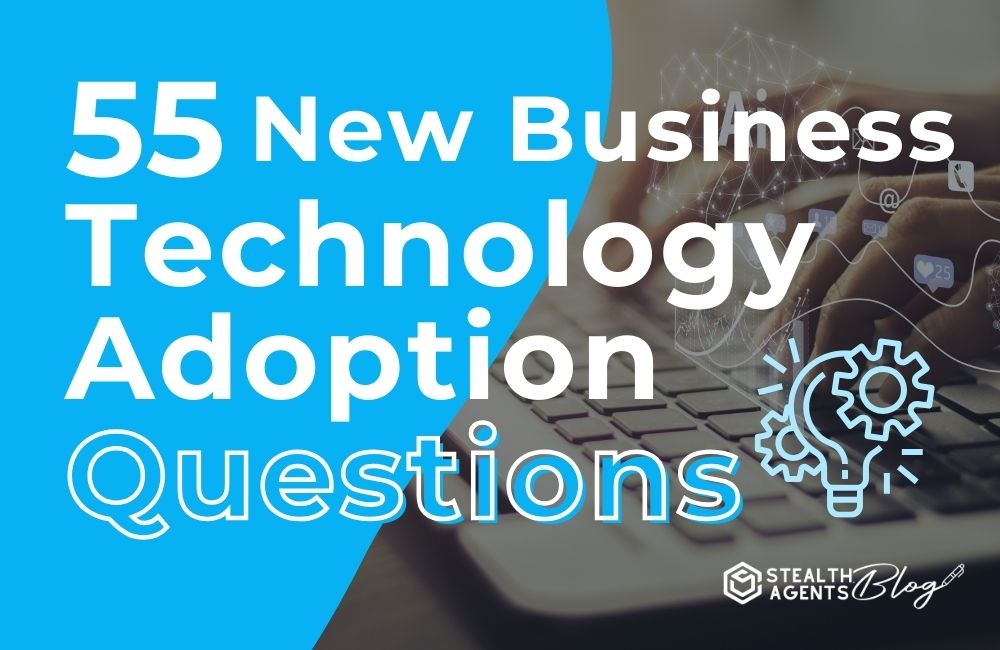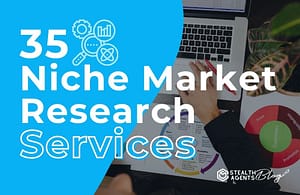55 New Business Technology Adoption Questions
The digital realm is advancing faster than a SpaceX rocket, and for businesses, keeping up can feel like a constant game of technological leapfrog. As you stand at the edge of this tech-saturated universe, poised for a quantum jump into the future, it’s not the shiny gadgets, but the strategic questions that you fire off like data-powered cannons that will make or break your leap. So, let’s arm you with 55 mission-critical queries, designed to propel your organization forward into the age of digital metamorphosis.
Overview of New Business Technology
In the relentless reshaping of our economic landscape, technology is not just an enabler but has sprawled into the domain of a strategic business partner. The adoption of new technologies is no longer a luxury; it’s survival gear for modern entities, allowing them to scale, evolve, and thrive amidst a sea of disruptors. The following list delves deep into the encapsulated microcosmos of business tech adoption, and how these tectonic shifts can either sling you toward the stars or tether you to the ground like discarded moon rocks.
List 55 New Business Technology Adoption Questions
-
What is the primary objective of integrating this technology into our business model?
-
How does this technology align with our long-term business strategy?
-
What financial resources are we willing to allocate for this technology adoption, not just for the initial phase, but for sustainable operation?
-
Do we have an established timeline for full integration, and how does it impact our current operations?
-
What impact will the new technology have on our existing workforce, and what training programs do we need to initiate?
-
Can the technology seamlessly integrate with our current IT infrastructure, or will it require an overhaul?
-
Will adopting this technology require substantial changes to our business processes, and are we prepared for this shift?
-
Do we have clear benchmarks for measuring the success and ROI of this technology?
-
Is this technology scalable to support future business growth?
-
How secure is this technology, and what measures are in place to protect our data and operations?
-
What are the potential regulatory implications of using this technology, and how do we ensure compliance?
-
How user-friendly is the technology for end-users, and what is the plan for user adoption?
-
What is the downtime expected during the transition phase, and how do we minimize business disruptions?
-
Who are the key stakeholders involved in the integration process, and what are their roles?
-
How does this technology affect our customer experience, and what strategies do we have to ensure a seamless transition?
-
What support and maintenance are offered by the technology provider, and at what cost?
-
What is the vendor’s track record for innovation, and how often do they update their technology?
-
Do we have a plan for handling technical glitches during the integration period, and what is the support process?
-
What does the technology’s architectural diagram look like, and what areas of our business does it touch?
-
What internal champions can we enlist to boost employee morale and enthusiasm for the new technology?
-
Are there any case studies or businesses similar to ours that have successfully adopted this technology?
-
Which department should take the lead in managing the adoption process, and why?
-
What is the technology’s environmental impact, and how does it align with our sustainability goals?
-
What role does customer feedback play in the technology adoption process?
-
How does this technology improve overall business efficiency and productivity?
-
Who will be responsible for periodically reviewing the technology’s performance and ensuring optimal usage?
-
What levels of customization does the technology offer, and to what degree can we tailor it to our specific business needs?
-
What are the ongoing support and licensing costs for the technology, and how do they project over time?
-
Does the supplier offer any discounts for long-term partnerships or bulk purchases?
-
Will this technology open up new revenue streams, and how?
-
Can we phase this technology in, rather than disrupt the entire business at once, to ensure a smoother transition?
-
How does this technology enhance our data analytics capabilities, and what actionable insights can we expect?
-
What measures are in place for continuous technology assessment and updates within our business model?
-
In which global markets has this technology been successfully implemented, and what were the key learnings from those deployments?
-
Does this technology embrace open standards and interfaces, enabling interoperability with other tools and systems?
-
How does this technology drive innovation within our organization beyond its primary application?
-
What are the industry benchmarks for technology adoption in this area, and how do we compare?
-
How transparent is the technology in terms of data usage and reporting functionalities?
-
Can we leverage the technology to enhance our mobile and remote work capabilities?
-
How will the technology enable or automate decision-making processes within our business?
-
Is the technology adaptable to changes in consumer behavior and market dynamics?
-
How does this technology impact our competitors, and what strategies do we have to maintain a competitive edge?
-
What level of integration with other cutting-edge technologies does this technology offer?
-
Can we operate a pilot program or sandbox environment to test the technology’s suitability before full integration?
-
What intellectual property implications arise from using this technology, and how do we protect our rights?
-
Does the technology require any specialized hardware or other dependent technologies that we do not currently possess?
-
How does the technology address the burgeoning ethical concerns around data usage and AI-driven decision-making?
-
Have we accounted for any hidden costs associated with technology adoption, such as additional customer care needs or training?
-
Have we considered the implications of this technology on our supply chain, and how do we ensure sustainability and reliability in this crucial area?
-
What changes will the organization’s structure undergo to best accommodate the new technology and any inherent shifts?
-
How does the technology feed into our corporate branding and messaging, and what positive story can we tell about our digital journey?
-
What are the primary risks associated with adopting this technology, and how do we mitigate them?
-
How quickly do we need to act on this technology to be ahead of the curve, and what is the minimum viable product we can start with?
-
What are the behavioral changes we expect in both employees and customers due to the adoption of this technology, and how can we manage them effectively?
-
As we dive into this technological deep end, what are our collective visions for the business on the other side, and how does this technology fit into that narrative?
Conclusion
Embracing new technology is akin to donning a superhero’s cape; it imbues your organization with powers beyond the mere mortal. But unlike comic books, these powers are real, and they come with real responsibilities and challenges. As you navigate the world of enterprise technology, remember that there are no single heroes; the whole team must rise to the occasion. Trust in technology presents an unparalleled opportunity, but only when it is built on the solid foundation of foresight, planning, and the right questions. Your digital superhero journey starts here. Ready for takeoff?





